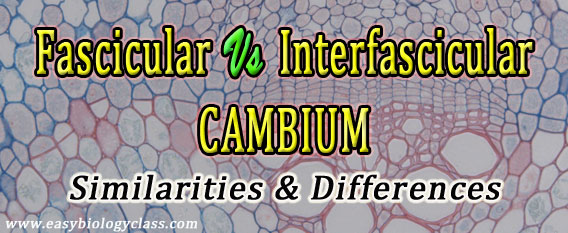Fascicular vs Inter-fascicular Cambium Cambium is a strip of meristematic cells present between the xylem and phloem in dicot plants. The primary function of the cambium is to produce the vascular tissue and hence it is called the ‘Vascular Cambium’. The vascular bundles found in the primary plant parts are […]
Continue ReadingCategory Archives: Plant Anatomy
Difference between Phellem and Phelloderm
During the secondary growth in both stem and root, the peripheral tissues like epidermis, hypodermis and cortex are replaced by a new secondary tissue called the Periderm (bark). The periderm composed of three components: (1) Phellogen, (2) Phellem and (3) Phelloderm. The current post discusses the Similarities and Differences between […]
Continue ReadingDifference between Primary and Secondary Meristem
Primary vs Secondary Meristem Meristems are a group of plant cells that remain in a continuous state of division. The meristematic cells continuously produce new cells through the life of the plant. In previous posts, we have discussed the Characteristics of Meristematic Cells, Classification of Meristems and Difference between Meristematic […]
Continue ReadingAnatomical Difference between Stem and Root
Stem: Stem is the part of the plant which lies above the surface of the soil. It arises from the plumule of the embryo. Stem shows positively phototropic and negatively geotropic growth. Stem possess nodes and internodes. Branches, leaf, flower bud and bracts are developed from nodes. Root: Root is […]
Continue ReadingDifference between Shoot Apex and Root Apex
Shoot Apex vs Root Apex Apex is the growing terminal portions of the stem and roots in plants. The apical portion of the stem is called ‘Shoot Apex’ and that of the root is called ‘Root Apex’. The apex portions of both stem and root possess a meristematic tissue called […]
Continue Reading




